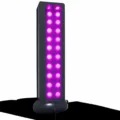Acne is a common skin condition that affects millions of people worldwide. With the myriad of treatment options available, it can be overwhelming to choose the right one. Hydrocolloid acne patches have emerged as a popular solution for many, promising to reduce the visibility and lifespan of pimples. But do they really work? In this article, we’ll delve into the science behind hydrocolloid patches and evaluate their effectiveness.
What Are Hydrocolloid Acne Patches?
Hydrocolloid patches are small, adhesive dressings originally designed for wound healing. They are made from a water-attracting material that helps to absorb moisture and pus from the affected area. When it comes to acne, these patches are placed over a blemish to protect it from external bacteria and to absorb exudate, thus promoting healing.
The Science Behind Hydrocolloid Patches
Hydrocolloid patches work by creating a moist environment, which has been clinically proven to aid in the healing process. This environment prevents scabs from forming, minimizes the chances of scarring, and speeds up the recovery of the skin. Additionally, by absorbing excess fluid, these patches reduce inflammation and the size of pimples.
How to Use Hydrocolloid Acne Patches
Using hydrocolloid acne patches is relatively straightforward. Cleanse your skin thoroughly and dry the affected area. Apply the patch directly onto the pimple, ensuring it’s firmly in place. Leave it on for several hours or overnight, then gently peel it off to reveal reduced redness and swelling.
Comparing Hydrocolloid Patches with Other Acne Treatments
Compared to other acne treatments like topical creams, gels, or oral medications, hydrocolloid patches offer a more targeted approach. They are generally considered safe for all skin types and can be used in conjunction with other treatments. However, they are primarily effective on surface-level blemishes and may not be as effective for cystic acne or deeper skin issues.
Real User Experiences with Hydrocolloid Patches
Anecdotal evidence from users suggests that hydrocolloid patches can be effective in reducing pimple size and redness overnight. Many appreciate the convenience and the non-invasive nature of the treatment. Nevertheless, individual experiences can vary, and what works for one person might not work for another.
FAQ: Hydrocolloid Acne Patches
Can hydrocolloid patches cure acne?
Hydrocolloid patches are not a cure for acne, but they can help manage individual blemishes by reducing their size and redness.
Are hydrocolloid patches suitable for all skin types?
Yes, these patches are generally safe for all skin types, but it’s always best to patch-test any new product if you have sensitive skin.
How often can I use hydrocolloid patches?
You can use hydrocolloid patches as often as needed, typically when a new pimple arises.
Can I apply makeup over a hydrocolloid patch?
It is possible to apply makeup over a patch, but it may not adhere well. For best results, use the patch on clean, bare skin.
Do hydrocolloid patches work on blackheads?
Hydrocolloid patches are designed for pus-filled pimples and may not be effective on blackheads.









